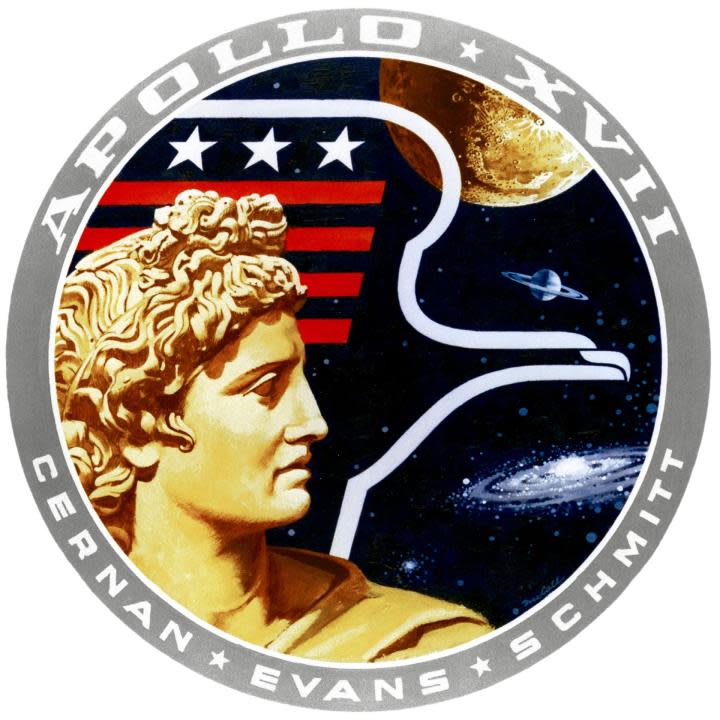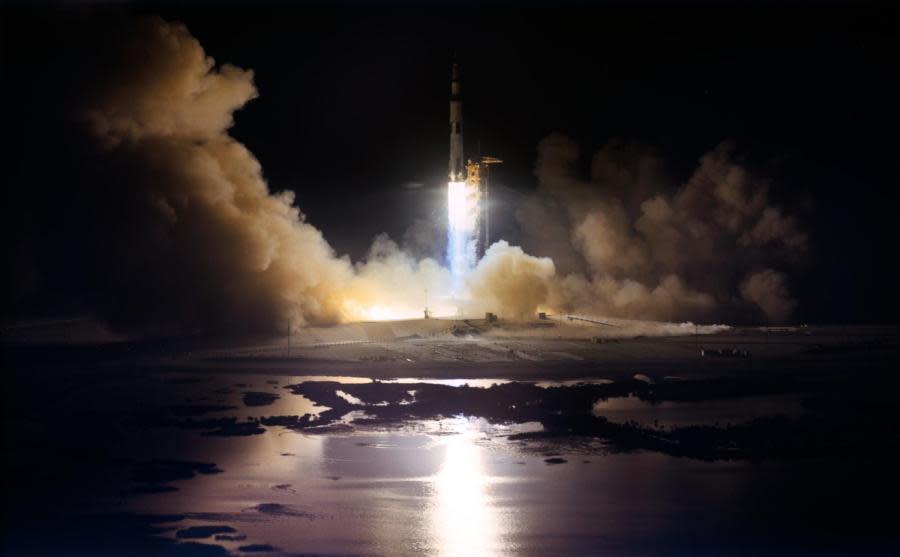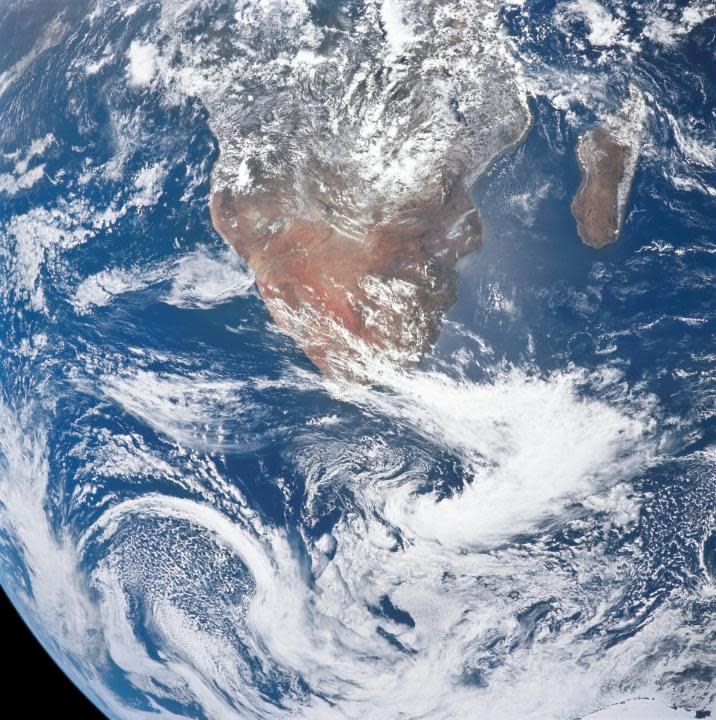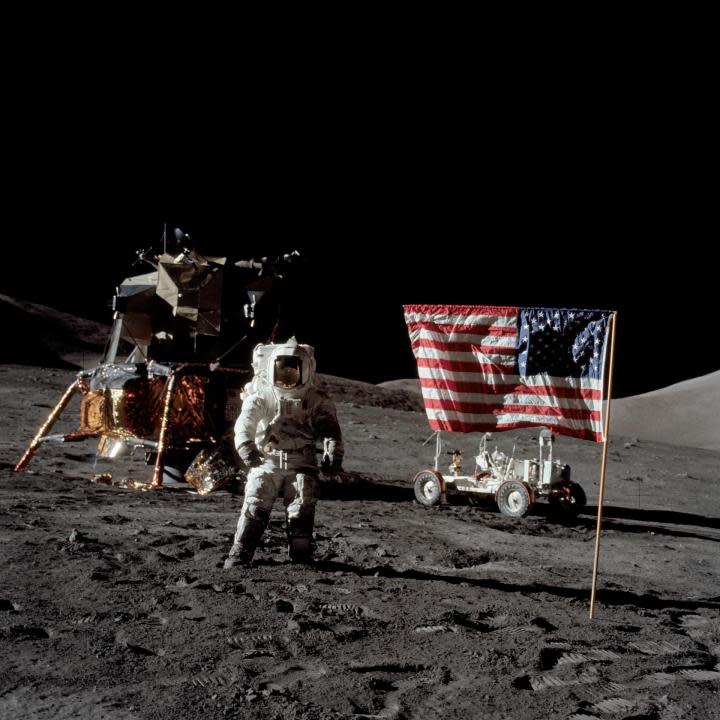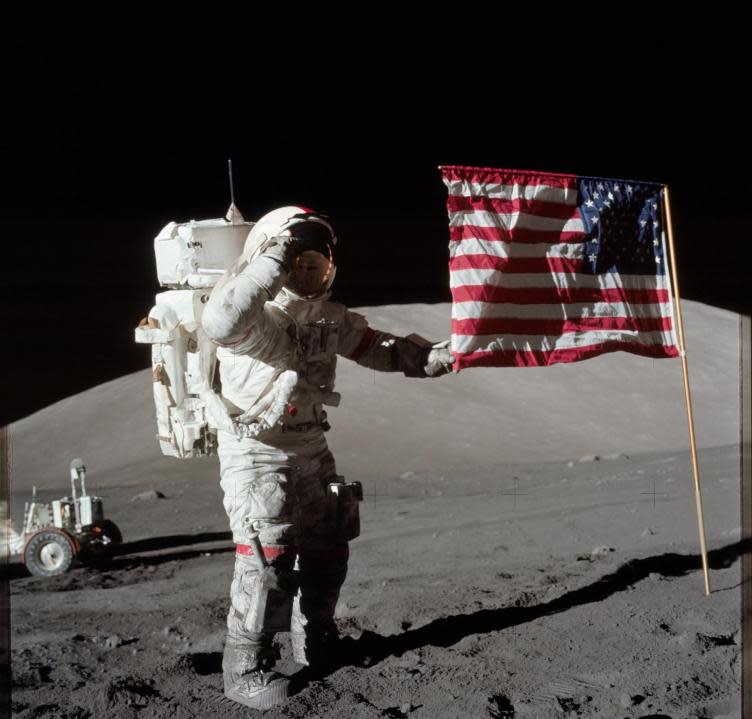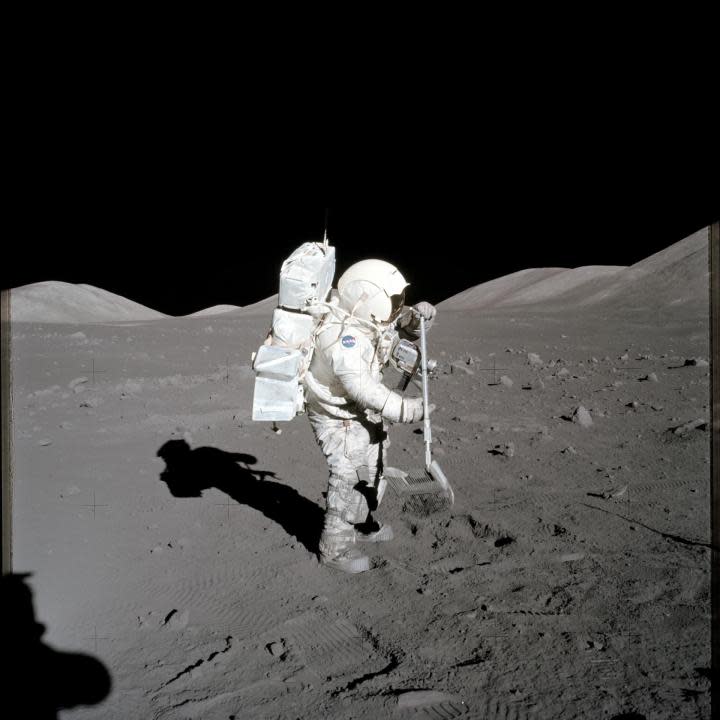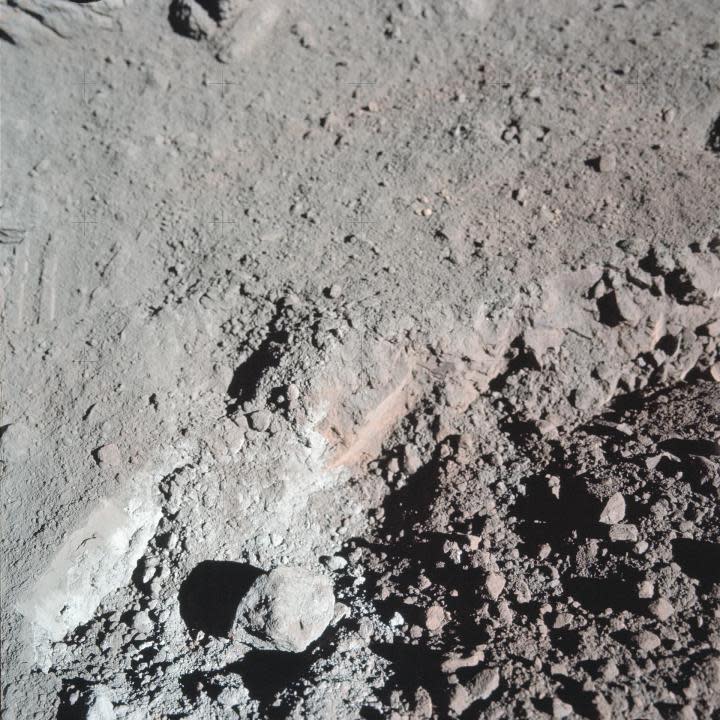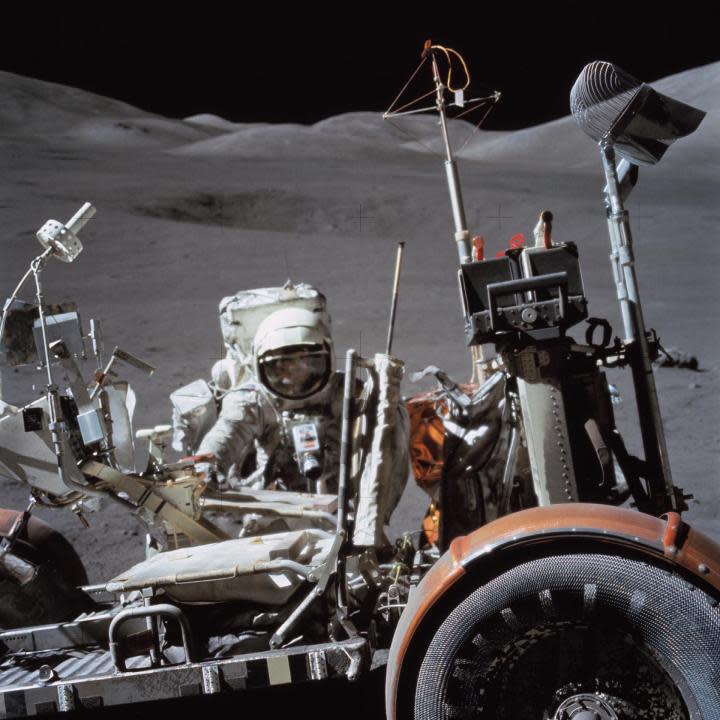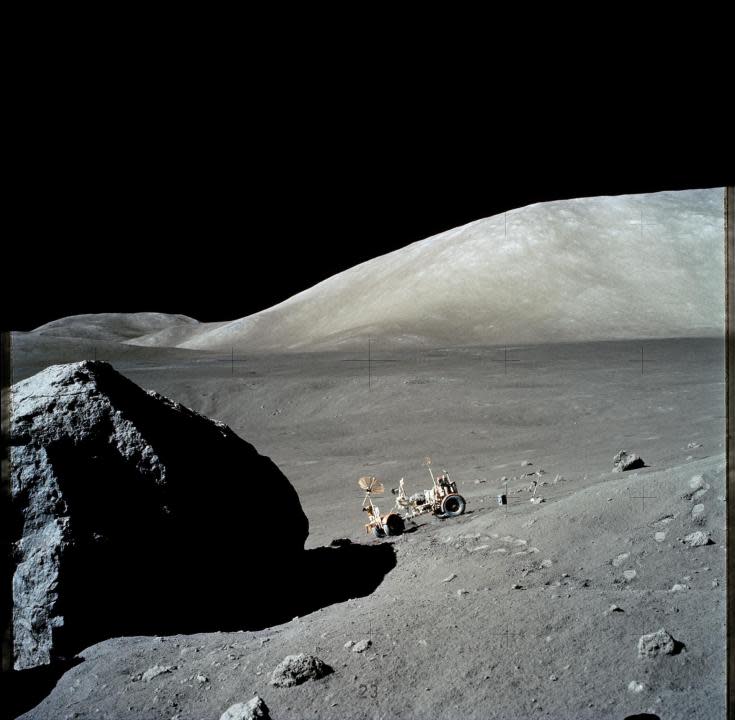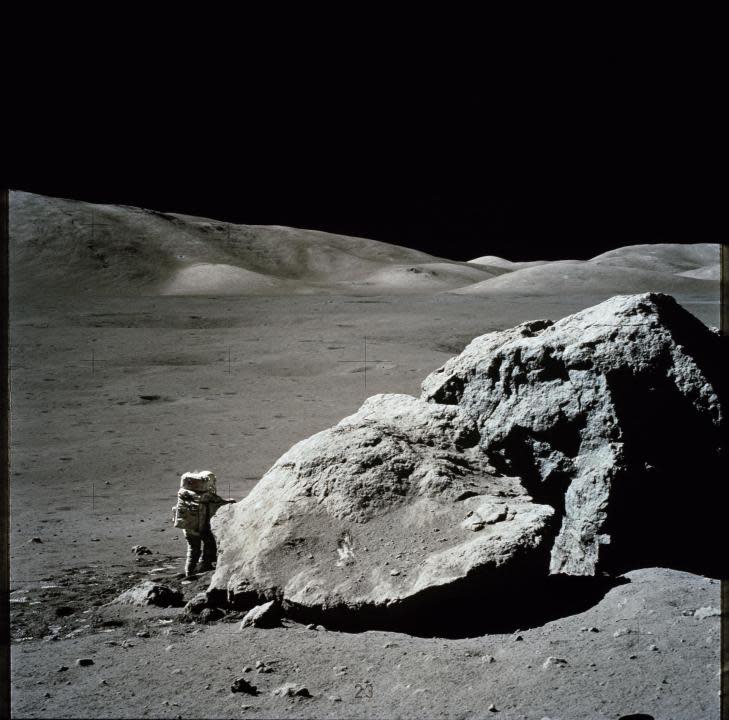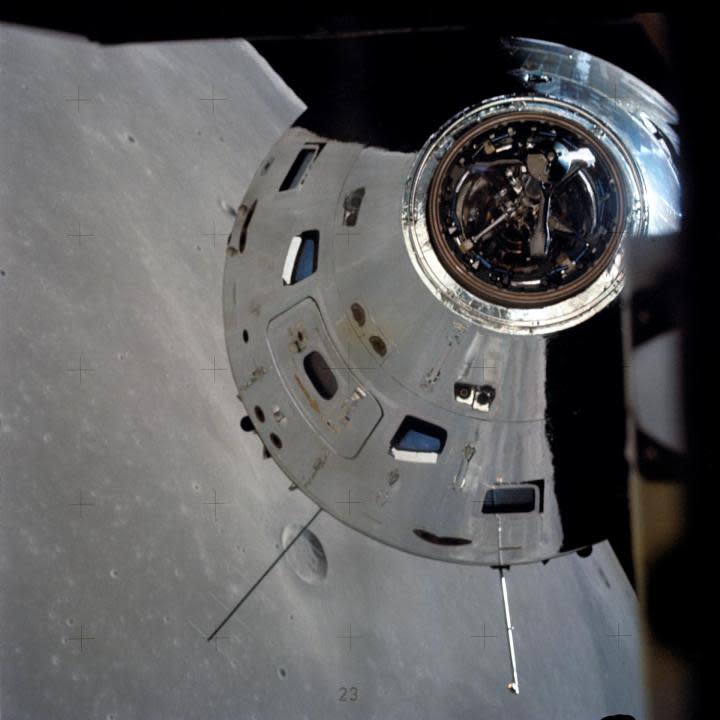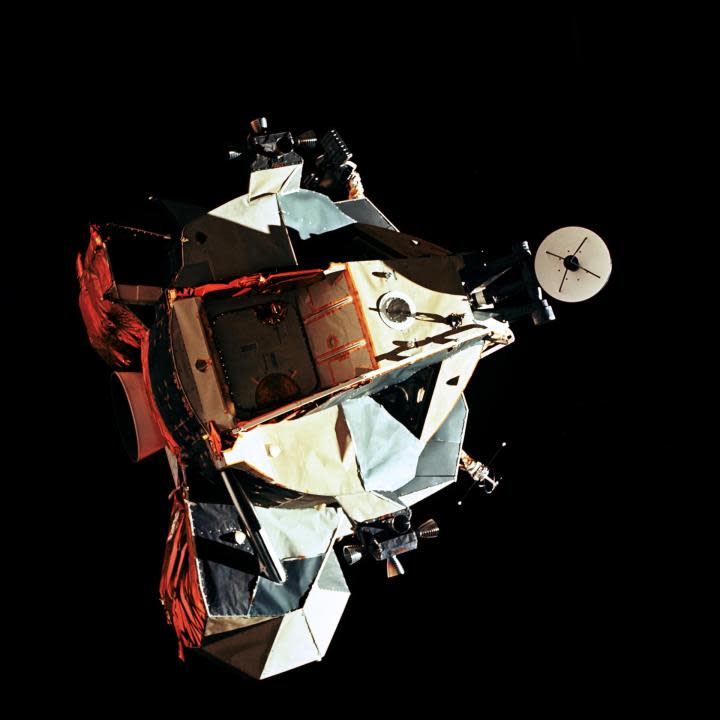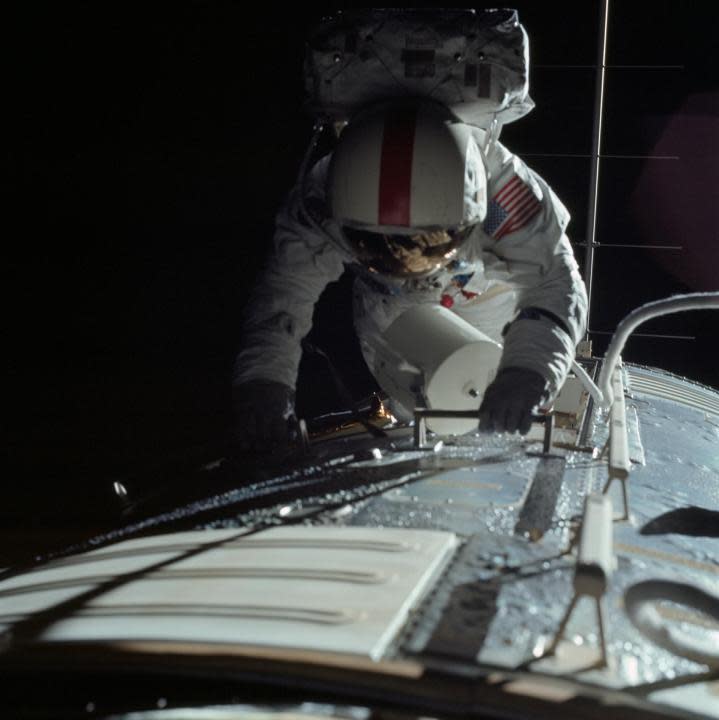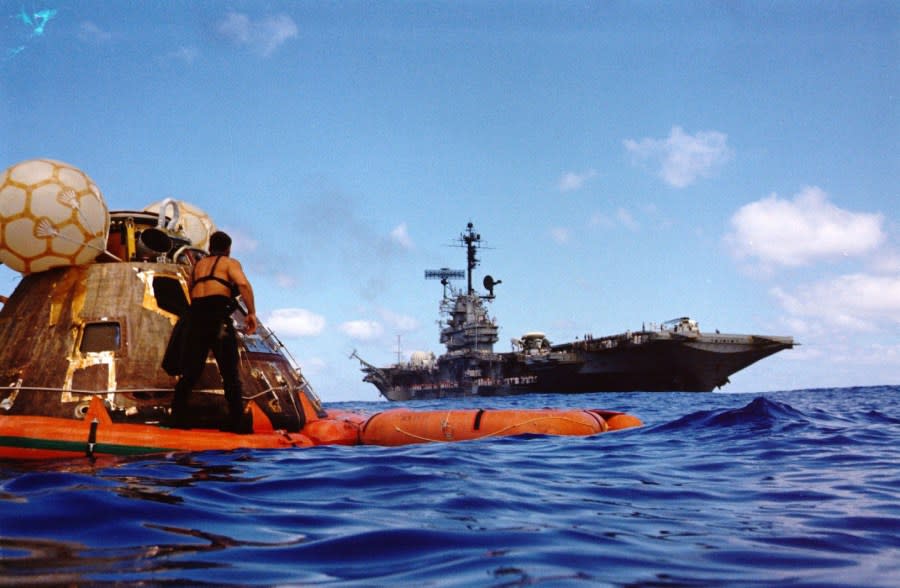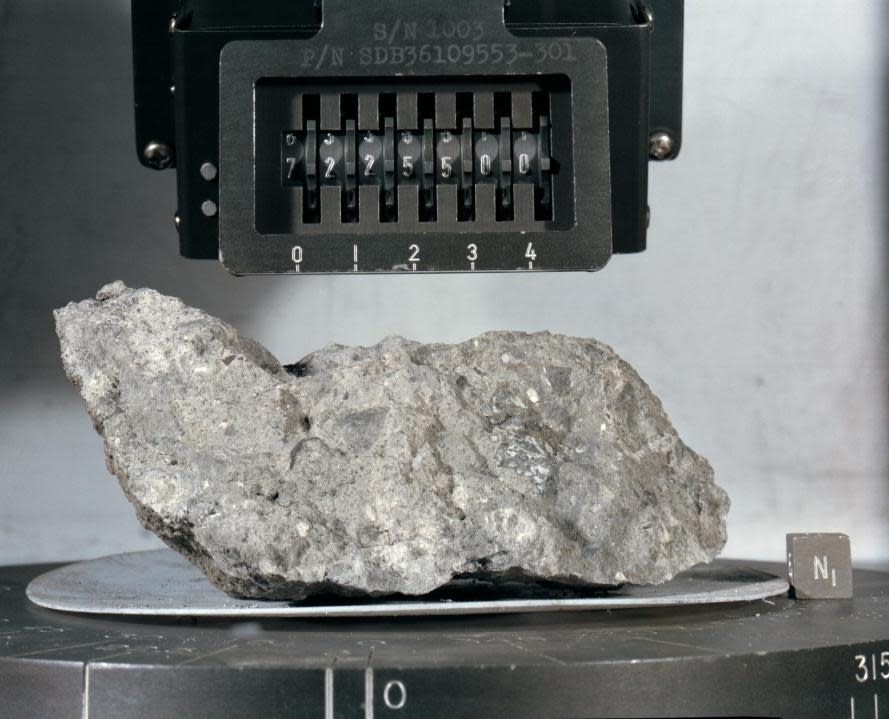On this date: the last moonwalk (for now)

- Oops!Something went wrong.Please try again later.
- Oops!Something went wrong.Please try again later.
- Oops!Something went wrong.Please try again later.
(WHTM) –On December 11, 2022, the United States completed the first step in sending human beings back to the moon, when an unmanned Orion spacecraft splashed down in the Pacific Ocean, bringing a successful end to the 25 1/2-day Artemis I mission.
It was exactly 50 years to the day that the last Apollo mission landed there. And today, December 13, is the anniversary of the last moonwalk.
Get daily news, weather, breaking news, and alerts straight to your inbox! Sign up for the abc27 newsletters here
On December 7, 1972, Apollo 17 lifted off from Kennedy Space Center in Florida. On board were Mission Commander Eugene Cernan, Lunar Module Pilot Harrison Schmitt (a trained geologist and the first scientist-astronaut on a moon mission), and Command Module Pilot Ron Evans. Command Module America and Lunar Module Challenger entered orbit around the Moon on December 10. The Lunar Module separated from the Command Module on December 11, landing in an area known as the Taurus-Littrow region. Cernan and Schmitt started their first EVA about four hours after landing.
This is the Apollo 17 insignia or logo. The seventh and last manned lunar landing and return to Earth mission, the Apollo 17, carried a crew of three astronauts: Harrison H. Schmitt, Lunar Module pilot; Eugene A. Cernan, mission commander; and Ronald E. Evans, Command Module pilot. Apollo 17 lifted off on December 7, 1972 from the Kennedy Space Flight Center (KSC). Scientific objectives of the mission included geological surveying and sampling of materials and surface features in a preselected area of the Taurus-Littrow region, deploying and activating surface experiments, and conducting in-flight experiments and photographic tasks during lunar orbit and transearth coast (TEC). (NASA) The huge, 363-feet tall Apollo 17 (Spacecraft 114/Lunar Module 12/Saturn 512) space vehicle is launched from Pad A, Launch Complex 39, Kennedy Space Center (KSC), Florida, at 12:33 a.m. (EST), Dec. 7, 1972. Apollo 17, the final lunar landing mission in NASA’s Apollo program, was the first nighttime liftoff of the Saturn V launch vehicle. (NASA) (7 Dec. 1972) — This view of a portion of Earth was taken from the Apollo 17 spacecraft following trans-lunar insertion during the final lunar landing mission in NASA’s Apollo Program. The visible land mass is the southern two-thirds of the African continent, with Madagascar at right. A portion of Antarctica is visible at bottom frame. (NASA) (13 Dec. 1972) — Astronaut Harrison H. Schmitt, Apollo 17 lunar module pilot, stands near the deployed United States flag on the lunar surface during extravehicular activity (EVA) of NASA’s final lunar landing mission in the Apollo series. The Lunar Module (LM) is at left background and the Lunar Roving Vehicle (LRV) at right background (partially obscured). (Dec. 1972) — Astronaut Eugene A. Cernan, Apollo 17 commander, is photographed next to the deployed United States flag during lunar surface extravehicular activity (EVA) at the Taurus-Littrow landing site. The highest part of the flag appears to point toward our planet Earth in the distant background. (NASA) (11 Dec. 1972) — Scientist-astronaut Harrison H. Schmitt, lunar module pilot, collects lunar rake samples at Station 1 during the first Apollo 17 extravehicular activity (EVA) at the Taurus-Littrow landing site. (NASA) (12 Dec. 1972) — A close-up view of the much-publicized orange soil which the Apollo 17 crewmen found at Station 4 (Shorty Crater) during the second Apollo 17 extravehicular activity (EVA) at the Taurus-Littrow landing site. The orange soil was first spotted by scientist-astronaut Harrison H. Schmitt. (NASA) (13 Dec. 1972) — Astronaut Harrison H. Schmitt, lunar module pilot, works near the Lunar Roving Vehicle (LRV) during the third Apollo 17 extravehicular activity (EVA) at the Taurus-Littrow site on the lunar surface. The front part of the LRV is out of frame at left, but the seats and several geological tools can be seen. (NASA) (13 Dec. 1972) — The Apollo 17 Lunar Roving Vehicle (LRV) is photographed near a large lunar boulder during the third Apollo 17 extravehicular activity (EVA) at the Taurus-Littrow landing site. About half of the boulder is captured in this scene, photographed by astronaut Eugene A. Cernan, mission commander. (NASA) (13 Dec. 1972) — Scientist-astronaut Harrison H. Schmitt is photographed standing next to a huge, split lunar boulder during the third Apollo 17 extravehicular activity (EVA) at the Taurus-Littrow landing site. (NASA) In this view, taken from the Lunar Module (LM), the Command and Service Module (CSM) are seen preparing to rendezvous with the LM. Note the reflection of the lunar surface on the CSM. (NASA) 14 Dec. 1972) — This 70mm view of the Lunar Module (LM) “Challenger” in lunar orbit before rendezvous with the Apollo 17 Command and Service Modules (CSM). While astronauts Eugene A. Cernan, commander, and Harrison H. Schmitt, lunar module pilot, descended in the Challenger to explore the Taurus-Littrow region of the moon, astronaut Ronald E. Evans, command module pilot, remained with the CSM “America” in lunar orbit. (17 Dec. 1972) — Astronaut Ronald E. Evans is photographed performing extravehicular activity during the Apollo 17 spacecraft’s trans-Earth coast. During his EVA, command module pilot Evans retrieved film cassettes from the Lunar Sounder, Mapping Camera, and Panoramic Camera. The cylindrical object at Evans’ left side is the Mapping Camera cassette. The total time for the trans-Earth EVA was one hour seven minutes 18 seconds. (NASA) (19 Dec. 1972) — A water-level view of the Apollo 17 Command Module (CM) floating in the Pacific Ocean following splashdown and prior to recovery. The prime recovery ship, the USS Ticonderoga, is in the background. When this picture was taken, the three-man crew of astronauts Eugene A. Cernan, Ronald E. Evans and Harrison H. Schmitt, had already been picked up by helicopter and flown to the deck of the recovery ship. The spacecraft was later hoisted aboard the USS Ticonderoga. A United States Navy UDT swimmer stands on the flotation collar. Apollo 17 splashdown occurred at 1:24:59 p.m. (CST), Dec. 19, 1972, about 350 nautical miles southeast of Samoa. (December 1972) — A “mug shot” of Apollo 17 lunar sample no. 72255 which was brought back from the lunar surface by the final team of Apollo astronauts. The rock weighs 461.2 grams and measures 2.5 x 9 x 10.5 centimeters. The light grey breccia is sub-rounded on all faces except the top and north sides. (NASA)
Return to moon long overdue, former astronaut says
In all, the Apollo 17 crew spent 22 hours performing three “Extravehicular Activities” – moonwalks. Challenger carried a Lunar Roving Vehicle, commonly known as a “moon buggy”. With the LRV the astronauts could cover a larger area than they could by walking. Overall the moon buggy traversed 30.5 kilometers (22 miles). The astronauts gathered 110.4 kilograms (243 pounds) of material from a number of different locations. They also set up scientific experiments, took lots of pictures, and fixed a broken fender on the moon buggy with duct tape. Their third and final EVA began at 10:25:48 p.m. on December 13 and ended at 5:40:56 a.m. on December 14. Challenger lifted off from the moon later that day.
Ron Evans performed a spacewalk on the way back, recovering cameras and instruments mounted on the outside of the spacecraft. America splashed down in the Pacific on December 19.
Rare Apollo mission moon rock back in Cyprus after 50 years
Three more Apollo missions were planned, but never happened. America’s interests turned elsewhere. Saturn rocket components were used for the Skylab space station, but NASA’s energies were channeled into creating a reusable “space truck”-the Space Shuttle. But going back to the moon was an idea for “sometime in the future”.
NASA capsule flies over Apollo landing sites, heads home
But now we’re trying for the moon again, this time with an eye to establishing permanent bases. An unmanned Orion spacecraft splashed down in the Pacific Ocean at 12:40 p.m. Eastern Time, bringing a successful end to the 25 1/2-day Artemis I mission. Artemis 2, the first crewed mission, is planned for 2024, with an actual Moon landing in 2025.
For the latest news, weather, sports, and streaming video, head to ABC27.
